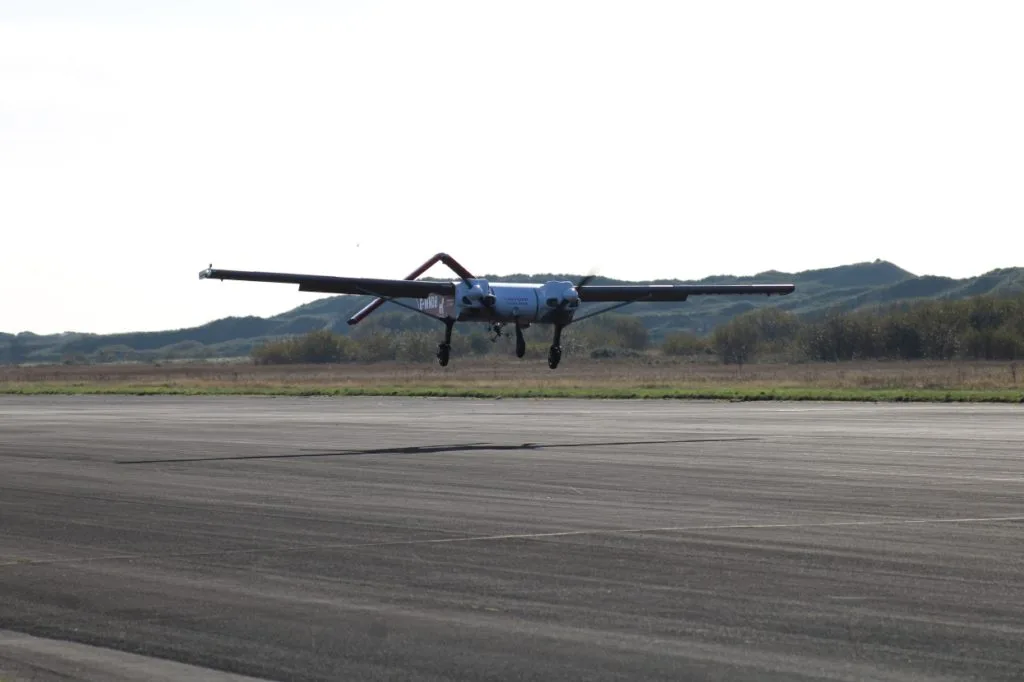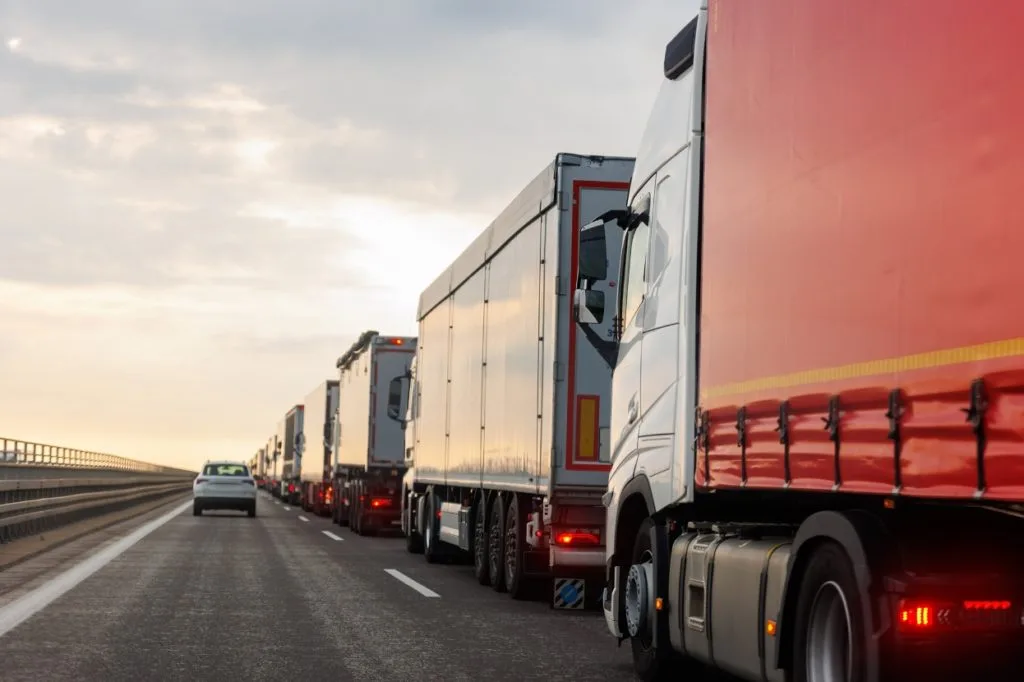Are Cargo Drones a Sustainable Solution for Freight Transport?

In the last decade, demands put on modern freight transport have grown rapidly. Partially, this has been driven by booming e-commerce, but increasingly complex supply chains and rising expectations around speed and reliability have also played big roles.
The result is that traditional freight systems have begun to struggle to balance these demands with the need for greater environmental sustainability. The writing is on the wall, and businesses are on the hunt for more economical and eco-friendly solutions. In this regard, cargo drones make a strong case for themselves. But can heavy-lift drones – those capable of carrying 100kg or more over middle-mile distances – really provide a sustainable, low-cost solution that meets the demands of domestic and international delivery?
Recent Advances in Cargo Drone Technology Have Helped
Autonomous cargo aircraft have become much more reliable and capable. Today’s drones that have been created for the middle-mile offer large payload capacities, longer flight ranges, and levels of autonomy that would have been unimaginable just five years ago. Models like our own Windracers ULTRA can handle useful loads of up to 150kg and can cover distances as far as 1,000km. It’s clear, then, that these aircraft are a practical solution for middle-mile logistics and can fill the gap between regional distribution hubs and local delivery points.
The technology driving cargo drones has matured significantly.
Today’s UAVs are equipped with advanced autopilot systems, sophisticated control and navigation software and robust airframes built to deliver in challenging weather conditions. There have also been leaps forward in battery and hydrogen propulsion technology, which has expanded drones’ potential, enabling longer flights and heavier loads without negatively impacting their sustainability through operational emissions.
There is a Strong Sustainability Case for Cargo Drones
One of the major advantages of cargo drones is that they have the potential to reduce the environmental impact of freight transport. When you compare them to conventional transport methods like diesel trucks, ships, or traditional aircraft, drones are far cleaner, with lower carbon emissions. This is because drones are typically powered by engines that are significantly more fuel-efficient than those of other freight transport alternatives. A 2022 study found that, when used in place of diesel trucks, drones reduced energy consumption by up to 94% and greenhouse gas emissions by 84%.
Electric drones are ideal for zero-emission flight, but today, the reality is that the charging infrastructure isn’t there yet, especially in remote and hard-to-reach regions. Until that changes, petrol-powered drones offer a practical and efficient solution, using far less fuel per journey than traditional means like trucks or short-haul planes. Being agile and adapting to today’s energy landscape is essential for moving the sector forward without waiting for infrastructure to catch up. Beyond emissions, drones offer secondary environmental benefits.
By shifting appropriate deliveries from road to air, drones can play a part in alleviating congestion on roads and reducing associated pollution. Heavy-lift drones result in fewer disruptions on our roads and less resource-intensive infrastructure development that damages our landscapes and local wildlife
Economic and Operational Efficiency
Beyond the environmental advantages, cargo drones present a very persuasive business case in terms of cost and efficiency. It’s commonly thought that drone delivery comes with a high price tag, but data suggests the opposite. In fact, one study found that autonomous drone operations could reduce last-mile delivery costs by 40% to 70% compared to traditional van deliveries. But what factors drive these savings?
Reduced labour costs
Advanced heavy-lift cargo drones are autonomous, so there’s no need for drivers or pilots on each journey. A single operator can oversee multiple drones, and as systems become more automated, human involvement in routine deliveries is minimal.
Efficient routing
Drones fly direct point-to-point routes. They avoid traffic and take the shortest path through the air, cutting down travel time and fuel use. There’s no paying for vehicles to sit in traffic jams.
Minimal infrastructure strain
As they don’t require roads or rail, drones don’t contribute to road wear-and-tear, and there’s no need for distribution centres along the way. They effectively hop from warehouse to destination, bypassing lots of intermediary supply chain costs.

Enhancing Access Through Cargo Drones
Linked to the cost savings of cargo drones is their ability to access remote or challenging environments with comparative ease. The versatility they bring to the table enables them to offer reliable logistics in areas where roads are either inadequate or entirely absent. It’s a capability that is particularly valuable for international delivery, especially in developing regions or during humanitarian crises.
In the last few years, drones have successfully transported essential medical supplies, food, and critical spare parts to isolated communities, while reducing the transit times from hours or days to as little as minutes.

Looking for a Sustainable Freight Transport Partner?
At Windracers, we’re at the forefront of transforming freight logistics through advanced cargo drone technology. Specialising in middle-mile logistics, Wincracers ULTRA, a dual-use heavy-lift drone engineered, manufactured and operated in the UK, can carry useful payloads of up to 150 kg and has an operational range of up to 1,000 km. It’s ideal for connecting remote locations quickly and sustainably.
What’s more, it is engineered and purpose-built to manage the toughest conditions. Windracers ULTRA has successfully operated in challenging environments from humanitarian missions in conflict zones to scientific surveys in the Antarctic. We’re proud of these achievements and of the real-world performance Windracers ULTRA is displaying by ensuring essential supplies reach their destinations efficiently, sustainably, and economically.
If you’re interested in exploring how autonomous aircraft platforms can improve your supply chain’s sustainability and efficiency, Windracers is ready to assist. Visit our website or contact our team to find out more about our innovative cargo drone solutions and discuss how we can support your specific freight transport needs.
FAQ
Are heavy-lift cargo drones safe for regular operations?
Heavy-lift cargo drones feature advanced safety systems, including distributed autopilot and collision avoidance technologies. Ongoing regulatory developments ensure high safety standards.
What types of cargo are best suited to drone delivery?
Heavy-lift cargo drones excel at delivering medium-sized payloads like medical supplies, critical spare parts, and perishable goods rapidly and reliably.
Do drones operate effectively in poor weather conditions?
Many drones like Windracers ULTRA are designed to handle challenging weather conditions, including strong winds and rain, though severe weather can occasionally impact operations.

Further Reading
- World Rainforest Day: How Drones Help Protect Rainforests
- F.H. Hinsley, patron saint of use cases, bless our drones for Africa
- Aviation Sans Frontières and Windracers launch humanitarian drone operations to transform medical logistics in remote regions
- Windracers establishes operational hub in Malawi to demonstrate humanitarian air cargo missions